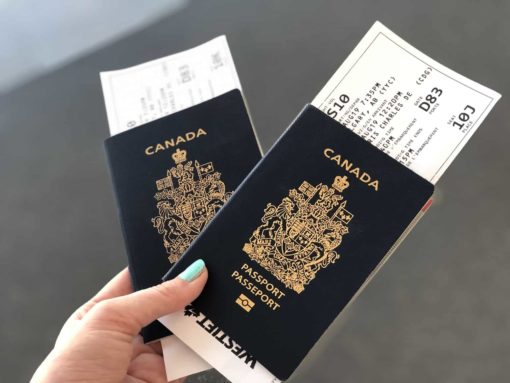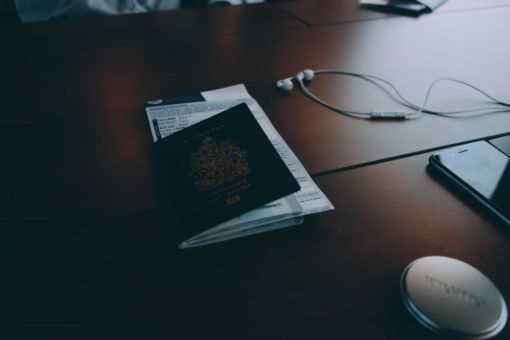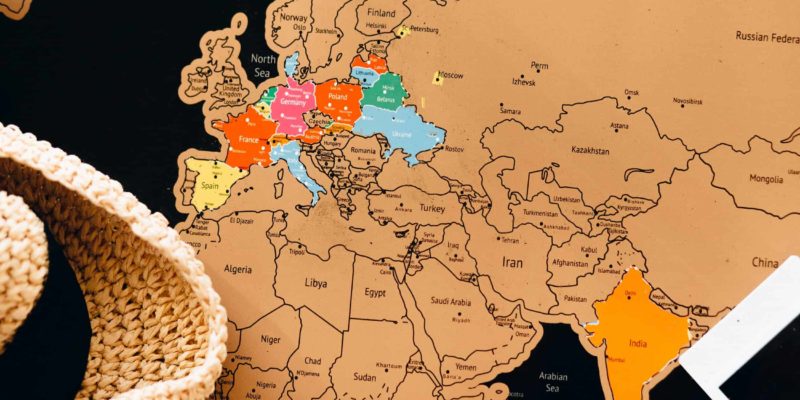Whether it’s your first trip to Europe or your fifth, there’s something exciting and overwhelming at the same time when planning to visit some of the world’s most spellbindingly beautiful countries.
There are many boxes to tick on your travel checklist to ensure everything goes without a hitch. These include your travel documents, day-to-day itinerary, car rentals, museums and public transportation tickets, and much more.
On top of that, Europe offers a slew of incredible places to visit, so even if you could travel for months, you would still feel like you’re missing something important.
That’s why planning a perfect trip to Europe and tackling your to-do list in a practical, down-to-earth way can seem overwhelmingly complicated.
Does this sound familiar? Take heart!
This post will help you cut through the confusion and kick your love of travel planning into gear.
So, bear with us for the next few minutes because you are about to read the most effective, tried and tested tips for planning an epic trip to Europe.
Note: We’ve also put together a detailed packing list, so be sure to check out our suggestions before you head off to Europe. You can read our ultimate packing list here.
Table of contents:
1. Find out if you need a Schengen Visa to travel to Europe
2. Get your documents in order
3. Decide on the length of your trip and approximate travel dates
5. Pick one or more destinations
7. Book your flights, hotels, and day tours
1. Find Out if You Need a Schengen Visa to Travel to Europe

Before you figure out where in Europe you want to go and start planning your trip with military precision, you need to determine whether or not you need a Schengen Visa to travel.
So, spare a few minutes to read this post and find out if you need a Schengen Visa to travel to Europe!
Failing to get a Visa (if you are required to get one) could lead to you not being allowed to enter your destination country and, ultimately, ruin your dream vacation.
While some countries are required to get a Visa to enter the Schengen Area, other countries are only required to apply for an ETIAS Visa Waiver.
ETIAS is a travel authorisation you can apply online for and receive by email, without the need to go through an application process at the Embassy or Consulate.
So, first and foremost, be sure to check if you are required to get a Visa for Europe to avoid being caught off guard by unexpected issues when crossing the Schengen borders.
2. Get Your Documents in Order

Now that you know whether or not you need a Schengen Visa to travel, it will be easier for you to plan an epic trip to Europe.
If you are not required to get a Visa before travelling, you’re in luck. This means you are able to avoid the Consulate red tape and only focus on the exciting part of your new upcoming travel adventure (such as picking up your destination).
However, even if you do not need a Visa to enter Europe, be sure to check if you hold a valid passport (that has at least six months validity remaining).
If you don’t have a valid passport, it can take anywhere from 2 to 6 weeks to get one from your time of application (depending on your country of residence).
In case you need a Schengen Visa to travel to Europe, this is the first major hurdle you need to face to make your dream trip come true. Be sure to plan ahead and collect your documents on time as it can take between 2 and 3 months to prepare your Schengen Visa application, submit it, and get an answer from the Embassy.
Getting a Schengen Visa can be a notoriously long and complicated endeavour, so if you need help getting started with your application and removing the chance of failure due to submitting inconsistent documents, you’re in the right place.
Visas Association’s team has put a lot of effort into creating a wide variety of free resources available on our website. Please feel free to explore them and learn more about the Schengen Visa application by clicking on the “Resources” button in the navigation bar.
Alternatively, our Visa experts can create a Personalised Schengen Visa Requirements Report to help you remove confusion and stress and provide you with a complete list of requirements based on your personal situation.
We are proud of being the only Schengen Visa Agency providing expert, up-to-date, highly affordable Customised Schengen Visa Requirements Reports. So, do not miss the opportunity to get your unique Embassy Report and finish your application without stress or wasting time!
3. Decide on the Length of Your Trip and Approximate Travel Dates

When you start planning your trip to Europe, there are many factors influencing the length of your journey and travel dates, such as your budget, predetermined holidays at work, or the number of places you want to visit.
For example, there are times of the year when flying costs less. Typically, the late fall and winter months are the cheapest time to fly to Europe, while the cost of flights increases during peak seasons (such as summer, Christmas, and New Year’s holidays).
So, if you plan to go to Europe on a budget, you should consider travelling in the off-season.
Deciding on the length of your trip can also be tricky.
You do not want to book a short trip and realise a couple of days before returning home that you want to keep on going. On the other hand, you don’t want to book a long trip and realise in the middle of it that it is tiring you out and draining your wallet.
However, whether you plan to travel for a week, a couple of weeks, a month or more, do note that you are allowed to spend a maximum of 90 days within every 180-day period in the Schengen Area.
The 90/180 days rule is applicable whether you will be travelling with a Schengen Visa or an ETIAS Visa Waiver, so be sure to plan your trip accordingly.
4. Establish a Budget

Once you have decided on the length of your trip and approximate travel dates, it’s time to create a finely-crafted budget to have an idea of how much money you will need for your trip to Europe.
Europe may be full of fabulous attractions to explore, fairytale towns, captivating coastlines, and majestic mountains, but all that could come at a high price.
So, if you’re travelling on a budget and do not want your trip to Europe to take a big bite out of your bank account, make sure you carefully plan your budget.
Start by setting a budget for food, transportation, city tours and sightseeing. We are also encouraging you to create a budget for extra expenses and emergencies.
For example, even if you book a round-trip flight, it’s good practice to have extra room in your budget to cover the expenses for a flight home and other unexpected travel costs.
In the unfortunate event that something happens and you need to leave straight away, then you will be prepared for any fees that come along the way.
We are also encouraging you to keep your daily expenses and travel emergency budgets separated (you could potentially keep them in different bank accounts). A budget that’s out-of-sight is out-of-mind and less likely to be spent.
5. Pick One or More Destinations

Now that you have a budget and timeline, it’s time to pick your travel destination.
You might ask yourself, “Shouldn’t I pick a destination first and then create a budget based on my travel destination?”.
No! If you pick your destination before making a travel budget, you’re putting the cart before the horse.
While some European travel destinations can be done on the cheap, others require a bit more of an investment. That’s why you need to tally your trip costs up with the money you can afford to spend during your journey.
On top of that, creating a budget is paramount to the success of your Schengen Visa application. This is because each Member State has set a minimum amount an applicant needs in their account when requesting a Visa.
This amount varies by country, and it goes from 14 euros per day (Latvia) up to 100 euros per day (Estonia). For further details, please check out our Schengen Visa Financial Means Test.
So, based on your budget, you can pick one or more destinations. What takes your fancy? Do you prefer mountains or beaches?
Whether you’re looking for an awe-inspiring adventure in nature or an in-depth cultural tour, Europe offers an endless array of fabulous destinations.
To narrow down your choices, we suggest you read our list of 15 most visited tourist attractions in the Schengen Area.
6. Create a Travel Itinerary

Have you decided on your travel destination? Then it’s time to sketch out a day-to-day travel itinerary of your dream trip to Europe.
Start brainstorming what you’d like to visit once you arrive at your destination. Check out some reliable travel blogs and guides (such as Nomadic Matt, Anywhere We Roam, or Atlas & Boots) and write down everything you’d be interested in visiting or doing.
Figure out how many days you want to spend in each location and the most suitable means of transport to move from one location to another (e.g., car, train, ferry, plane, etc.).
To help you quickly create a schematic outline of your trip, we have put together a complete, step-by-step guide to building your day-to-day travel itinerary. Be sure to spare a few minutes and read it before planning your route through Europe.
Note: We are strongly encouraging you to create a day-to-day travel itinerary whether or not you need to apply for a Schengen Visa.
A travel itinerary will help you maximise your time, keep track of what you’re doing, and prioritise activities.
However, if you need a Schengen Visa to enter Europe, be sure to submit your travel itinerary with your application.
Although it is an optional document for most Consulates and Embassies, your travel itinerary can bring additional proof of your travel purpose and increase your chances of getting a Schengen Visa.
7. Book Your Flights, Hotels, and Day Tours

Flights and hotels are likely to be the most expensive part of your trip, so you’ll want to book them before anything else.
If you are travelling on a budget, be sure to have a look at these posts: 6 Tips to Find Cheap Flights to Europe & Schengen Area and 6 Tried & Tested Ways to Find Cheap Accommodation in Europe.
You will learn some great tips for saving money on airfare and getting the thrill of a great bargain.
Once you have booked your flights and hotels, you can start booking tickets for each site and activity included in your travel itinerary, including local transportation.
If you’re travelling to different cities in the same country (or neighbouring countries, such as Italy and Switzerland), a car rental is your best bet to quickly reach your destinations.
Important note: If you need a Schengen Visa to travel to Europe, do not pay for your flights and accommodation upfront.
Most flight tickets are non-refundable (as well as some hotel reservations), meaning that you won’t get your money back in the unfortunate event that your Visa gets rejected.
To learn how to book your flights and hotels for your Schengen Visa application without paying upfront, please check out these guides: Flight Reservations for Schengen Visa and Hotel Booking for Schengen Visa.

Conclusion: When it comes to a continent as varied as Europe, it’s easy to get lost in the puzzle of information overload available on the Internet.
Especially if you need to apply for a Schengen Visa first, everything can be confusing – from preparing your application to narrowing down your destinations and drawing up a list of expenses that you’ll need.
That’s why we have penned down this practical guide to planning a trip to Europe, which, hopefully, will save you headaches and make you realise that planning a trip can be just as fun as the trip itself.
If you need a Schengen Visa to travel but feel overwhelmed by the stressful and daunting application process, our team of Visa experts is ready to help you 24/7.
We want you to make the most out of your trip to Europe, ditch the stress of figuring out what documents you need to submit and what information they need to include, and ensure you have the best chances of getting approved.
That’s why we would be glad to provide you with a no-obligation consultation and give you the next steps you need to follow to get your Schengen Visa.
There is no commitment to using our services at all; we just provide you with free advice to make your Visa application easier, so make sure you get your 100% FREE Consultation today!
